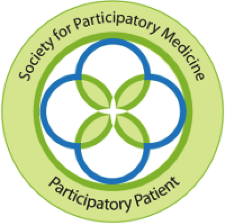 Since HIMSS14, there’s been a robust discussion on the SPM listserv about the “business of IT” in healthcare. There were a number of our number present in Orlando for the HIMSS conference, with some of them appearing on the platform.
Since HIMSS14, there’s been a robust discussion on the SPM listserv about the “business of IT” in healthcare. There were a number of our number present in Orlando for the HIMSS conference, with some of them appearing on the platform.
The conversation on our listserv, which you can read if you’re a member (If you’re not a member, why not? Close that gap here.), included many of our members expressing skepticism that the current landscape of health IT, particularly EHR (Electronic Health Record) development and implementation, offered much in the way of data use by patients.
My take, from the patient-with-experience-in-IT-implementation POV:
In my direct experience of all sorts of tech/IT initiatives in the business world – as an end-user on the eval team, not as a front-end designer of the system – over a number of decades, I can say that the issues being wrestled in the healthcare industry regarding IT system design and adoption are very common to all business-system tech engineering.
Designing a process without input from ALL process-chain touch points is a pathway to frustration, wasted resources, and not much in the way of useable [anything]. The only winner is the vendor who builds the process/system, since getting paid is baked into their development contract. They’ve only got skin in the game if the buyer has very smart peeps on their contract team, which is not the case in the majority of IT projects that I’ve had direct involvement in.
One commenter’s mention of the “I don’t get paid to do that” pushback from the clinician/provider side is one outcome of what you get when you take a billing process and try to turn it into a manufacturing process – which is what EHR tech is, at root, trying to do.
So, taken as a whole, health IT is itself a litter of chasms, or of silos – pick your metaphor. Patient value, along with value to every other part of the health delivery system, will only come to fruition when we stop paying only for “sick” and start rewarding for “healthy” – I’m not talking about wellness programs, I’m talking about monetary rewards for clinicians who demonstrate health improvement (and not just readmission #s, either) in their patient panels, and revenue rewards in the form of tax breaks, or premium reductions, or both, for patients.
I define patient value in health IT as:
- 100% access to my data
- The ability to interact with it, and my clinical team, within the IT system without having to be in the room with them (the “office visit” thing)
- Clear outcome metrics visible within the care plan that I can upload data to, reporting progress from my side
- Some form of atta-boy in $$ form delivered for attaining outcome goals based on the data reported
What’s the patient value of health IT from your perspective? Share it in the comments.






Your message is totally on target for what the vendors should be doing. Unless there is more direction by Those with power who really do want access, clarity, participation by others to have a usable tool that actually does something that reduces health care costs by having users, patients and care providers, bring something tangible and functionable to the table, nothing will change.
Send your message to the right ears in Washington.
Thanks, Liz – I’m part of a growing group who’s doing just that. Watch this space for updates =)